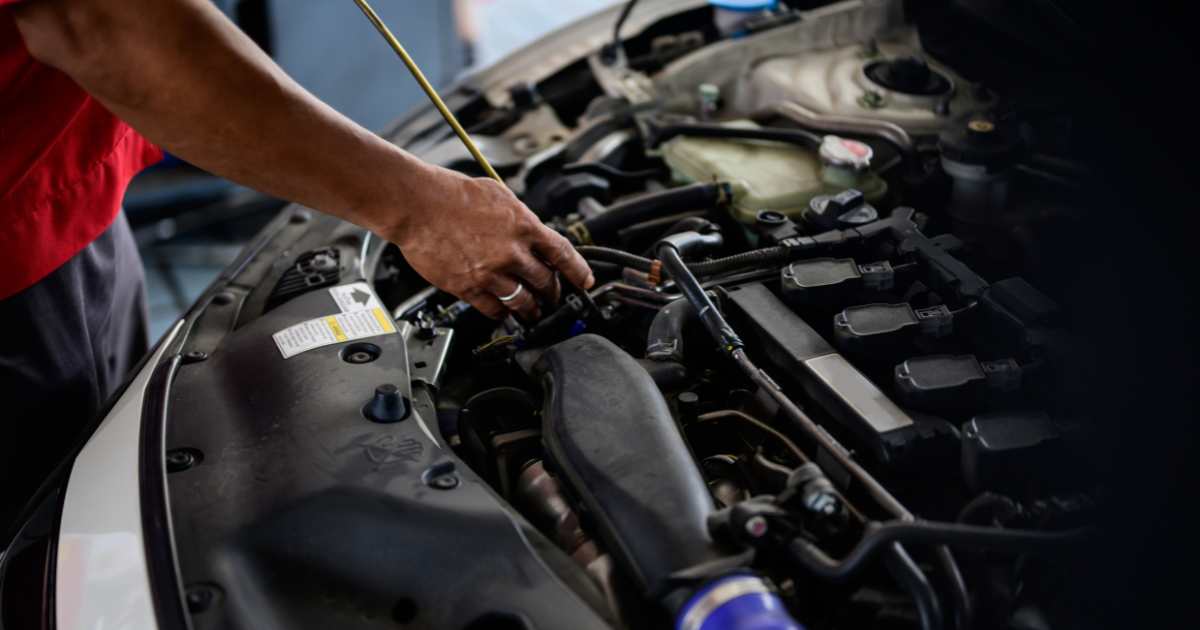One of the most responsible and proactive ways to ensure your vehicle and engine operate smoothly is through routine automotive maintenance. However, the products you use also play a crucial role in performance. Using the incorrect ones can lead to deposits, sludge, and pollutants, all of which can exacerbate wear and tear on internal combustion engines.
The maintenance process known as ‘engine flushing’ removes these deposits and pollutants, providing a significant boost to engine life. This is particularly true for vehicles with odometer readings of 35,000 kilometers or more. Understanding the advantages of engine flushing can reassure you of its importance and the benefits it brings to your car.
What is an Engine Flush?
The purpose of an engine flush is to remove accumulated deposits, sludge, and other debris from your engine using an aftermarket chemical additive. After pouring it into the oil-filler port, you let the engine run for ten to fifteen minutes. As it moves through the engine, it combines with the oil to help dissolve sludge and remove deposits.
After that, you change the oil filter, add fresh oil, drain the oil (along with most of the muck, theoretically), and resume driving.
What is the Purpose of engine Flushing?
You might be asking yourself, ‘Why do I need to flush the engine at all?’ at this point. The primary goal of an engine flush is to enhance your car’s performance by removing sediment and deposits that have accumulated within the engine lubrication system.
Heat, oxidation, and contamination cause oil to break down and thicken, forming engine sludge. This sludge can increase wear on engine components, decrease friction, and block oil passages.
You should think about cleansing your engine for the reasons listed below:
- Poor Maintenance: A car’s oil may deteriorate and form sludge if it has skipped multiple oil changes.
- Short Trips: Vehicles frequently driven for short distances (less than 10 minutes) might not heat up sufficiently to remove moisture and other impurities from the oil, which could result in the production of sludge.
- Excessive Heat: Driving in hot weather or carrying a heavy load can accelerate oil oxidation, leading to carbon buildup.
- Switching to Synthetic Oil: Before switching from conventional oil to synthetic oil, some drivers clean their engines, as this can remove old oil residue that could interfere with the new oil.
The Procedure for Conducting an Engine Clean
The following steps make up the intricate engine flush procedure:
- Preparing the Vehicle: First, confirm that the car is on level terrain. The engine ought to be cool. Next, locate the drain plug for the engine oil system and get a suitable container ready to hold the used oil.
- Applying the Cleanser to the Oil System: You can either add the engine cleaning solution directly to the engine oil or pour it in through the oil filler cap while the engine is running, depending on the product.
- Oil System Cleaner Circulation: After adding the cleaning solution, turn on the engine and let it run for up to 15 minutes. This enables the cleaner to disintegrate sediments and circulate them throughout the engine.
- Draining Contaminated Oil: Switch off the engine and remove the old oil once the cleaning solution has circulated. Take the time and make the effort to dispose of spent oil properly, as required by local laws.
After emptying the old oil, fill the engine with new oil. Follow the manufacturer’s recommendations and use the appropriate oil type and weight.
- Check for Leaks: Ensure the oil level is correct before starting the engine. To circulate the fresh oil and look for any problems, let the engine run for a few minutes.
When flushing your engine, follow the manufacturer’s instructions carefully. The first step is to choose an oil system cleaning that is dependable and effective for your engine type. See a qualified mechanic if you are still unsure how to do it.
When Is It Time to Think About Engine Flushing?
Although engine flushing can be advantageous, it is not always required. A number of factors determine whether you should cleanse your engine:
- Older Vehicles with High Mileage: An engine flush can be very beneficial for older vehicles or those with more than 35,000 kilometres, particularly if oil changes have been inconsistent. In older engines, the accumulation of oil sludge and deposits increases over time.
- Neglected Oil Change Service: If your vehicle has gone for extended periods without an oil change, engine flushing can help remove internal engine deposits and old sludge.
- Unfavourable Road Conditions: Cars driven primarily on stop-and-go traffic, for short trips, or in high temperatures are more likely to break down and develop sludge.
- Engine Performance Issues: Sludge accumulation may be the root cause if you observe a decrease in fuel economy or an increase in oil consumption.
- Changing Oil Types: An electronic flush can guarantee that there are no leftover deposits from the old oil that might ‘interfere’ with the performance of the new oil when switching from conventional to synthetic oil.
How Much Does an Engine Flush Cost?
Several variables, including the vehicle’s model, condition, and location, influence the cost of an engine flush. A professional technician with the requisite knowledge and experience to perform engine flushes safely and effectively is the best person to entrust with your car.
They also understand different engine types and their requirements, and have the appropriate tools. In addition to flushing the engine, the expert can identify additional issues with the vehicle that may have gone unnoticed. This professional guidance can provide you with a sense of security and ensure your vehicle’s optimal performance.
Conclusion
Frequent engine flushes offer several advantages. They prolong the engine’s service life and improve its overall performance. By doing this, you can also lower the likelihood of costly Car engine repair in Ajman, improve fuel efficiency, and lessen engine wear and tear.



